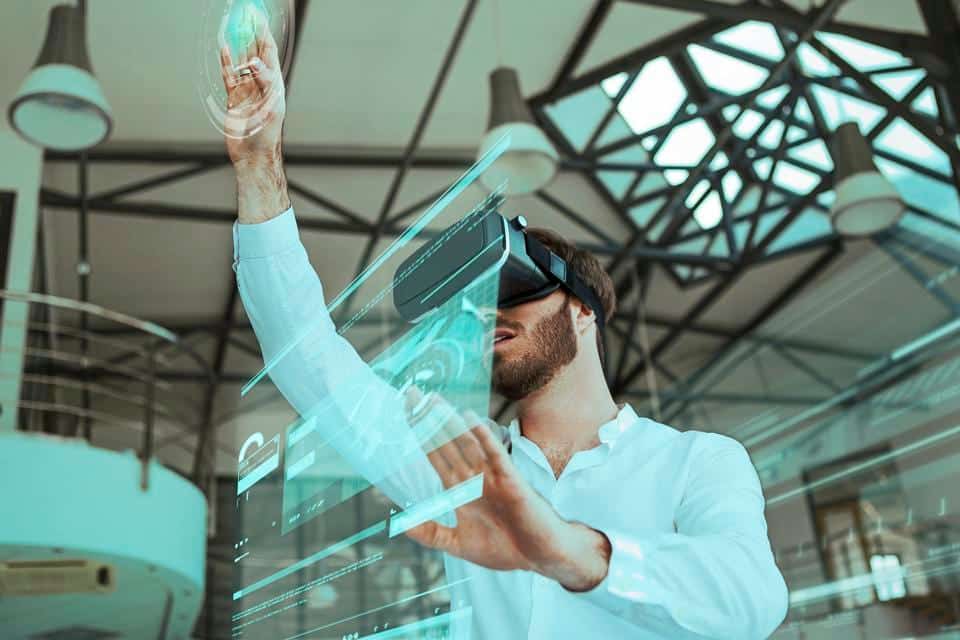
Immersive technologies like virtual reality (VR) have taken employee training to a new level of hands-on learning in a world where practice makes perfect. The conversation I had with Tom Symonds, CEO of Immerse, a firm that creates interactive employee experiences that combine VR, AR, and 3D technology, led me to this conclusion.
VR-based training is a considerably more interesting and participatory experience for employees than looking at PowerPoint or viewing a video, according to Symonds. It’s possible for them to practice on their own, or with a trainer and colleagues, resulting in a more hands-on experience.”
Virtual reality-based training at a worldwide pharmaceutical company helped employees master a new manufacturing process 56% faster than they would have otherwise. Using the Immerse platform, an international transportation and logistics company simulates real-world warehouse circumstances to teach container stacking best practices to new hires. The Immerse platform was used by a worldwide mining corporation to combine current training content and integrate it into the company’s learning management system. Additionally, Immerse has clients in the fields of energy, healthcare, and manufacturing.
To put it another way: “We envision being the premier immersive ecosystem for businesses.” In VR, you’re completely focused on the subject at hand, which makes it an excellent teaching tool. Knowledge retention and muscle memory are boosted by immersing yourself entirely in the present moment because you learn by doing. The more people are able to perform at a high level, the more time they have to do so.
Virtual reality provides low-risk, high-reward training
It is possible to train someone in a virtual environment by overlaying them with digital information or objects that represent the actual experience. For training, the Immerse team produces and iterates on 3D models and interactivity that can be replicated with uncanny accuracy. Employers are able to track the exact movements of their employee’s thanks to the technology, which collects 40 data points per second.
It is possible to determine exactly when and where someone is taking too long or too little time to accomplish a task, which has an influence on both productivity and quality, according to Symonds. Everyone makes a mistake at step 25, hence there must be a problem with step 25 in a training assessment.” It’s possible that the process needs to be re-configured, or the instructions are incorrect. For those “critical times,” the data allows the company to quickly conduct remedial procedures.”
Using mixed reality for business purposes
Virtual reality-based training sessions can be used by employees to practice and reinforce their knowledge over time, ensuring that they are always ready for an emergency. Oil refinery personnel, for example, might take part in a health and safety module that simulates fires or other dangerous circumstances. Virtual reality can be used to train healthcare workers how to use cutting-edge medical equipment without risking the lives of patients or causing downtime for the machines. Workers in the industrial manufacturing sector may need to be taught fast in order to keep up with changing market conditions.
VR allows us to build a training experience as similar to the real thing as possible, allowing someone to learn faster with less lost time. ‘ Symonds remarked, “They can try again and again until they get it right.” Compared to traditional classroom and online learning, this platform has a lot greater business value. Using 3D, trainers will be able to immediately check if you are performing the tasks correctly or not.
VR adds a new dimension to the enjoyment of video games
Ten years ago, Symonds began thinking about how immersive technology could improve learning after a career in digital transformation in the business and media industries. After the arrival of consumer virtual reality (VR) headsets, he became an entrepreneur at the helm of Immerse.
I wanted to bring that degree of engagement and attention to workplace learning since multiplayer online gaming produces such high levels of engagement and attention. “I understood that the 20-year-old classroom and e-learning area was ripe for disruption, and new technologies like VR were great for driving a more engaged learner.
It’s time for SAP.iO to revolutionize employee training
SAP.iO Foundry San Francisco, the company’s global B2B accelerator, accepted Immerse into its Future of Work cohort. Symonds said he appreciated the SAP specialists’ market insights, which helped him fine-tune pricing and positioning for his company. It is listed on SAP Store and connected with SAP SuccessFactors Human Experience Management (HXM) Suite.
Future plans include for expanding VR training from their current focus on health and safety and technical skill development to include a broader range of soft skills, such as diversity and inclusion (D&I), communication, and more.
The ability to develop “softer skills” through virtual reality is a big advantage, he said. When it comes to VR training, “off-the-shelf content” like this is the next natural step in the evolution of workplace training.
Source: Forbes



